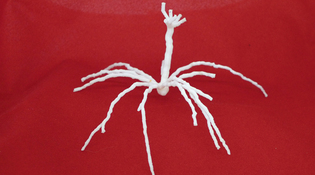 loading
loading
FindingsBrain powerModeling anatomy with a 3-D printer.  Joseph Zinter '11PhDView full imageSome scientists ascribe their greatest discoveries to their ability to visualize abstract entities and processes; Einstein developed the theory of relativity by imagining a bolt of lightning and a speeding train with two observers. Now scientists are getting high-tech help for imagining microscopic anatomy. Using a three-dimensional printer, the Yale Center for Engineering Innovation and Design has created models of many anatomical structures, including this five-inch-wide plastic mouse neuron. (The spindly, leglike structures are dendrites, which carry the electrical signals that travel from cell to cell.) The model is a rendition of 3-D digital images produced by the lab of neuroscientist Gordon Shepherd and CEID.
The comment period has expired.
|
|